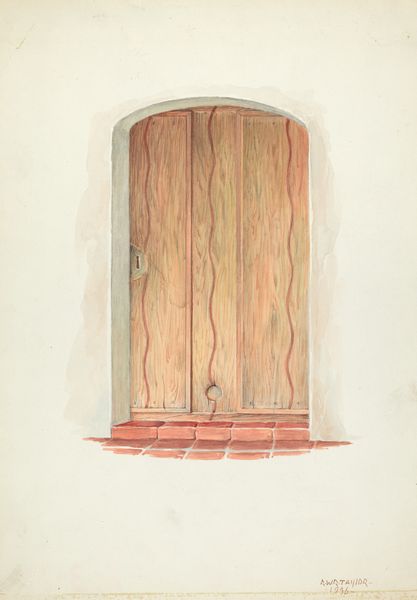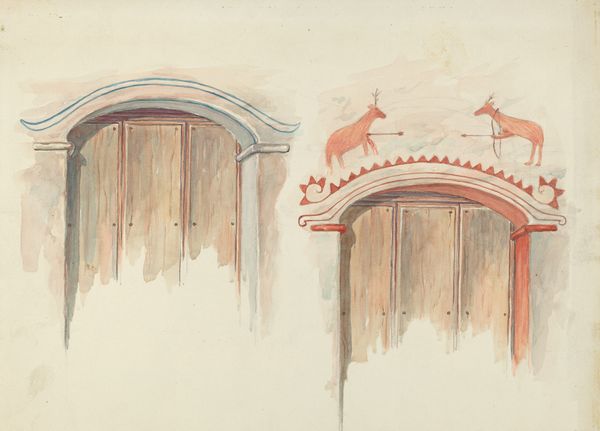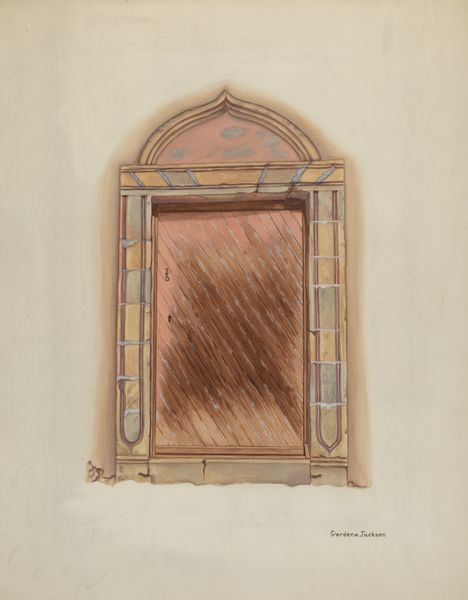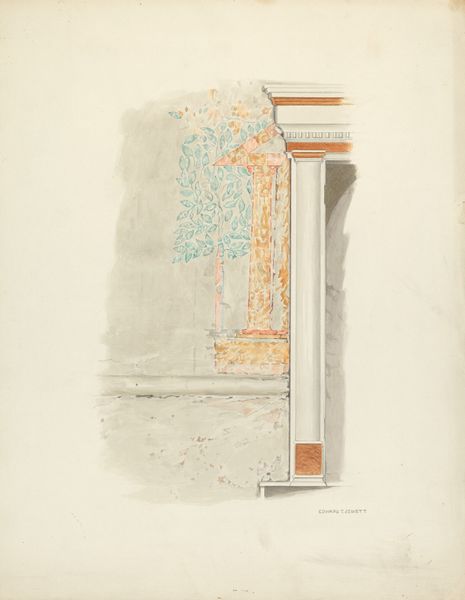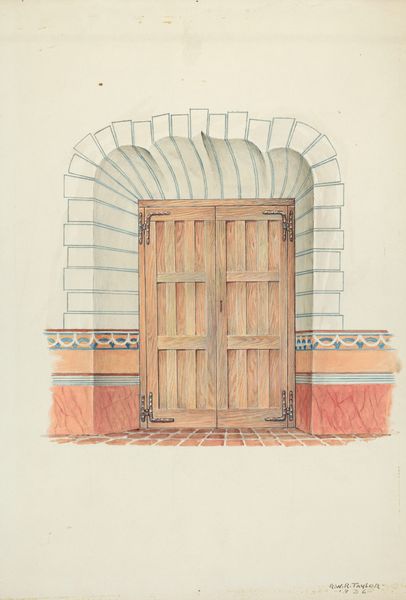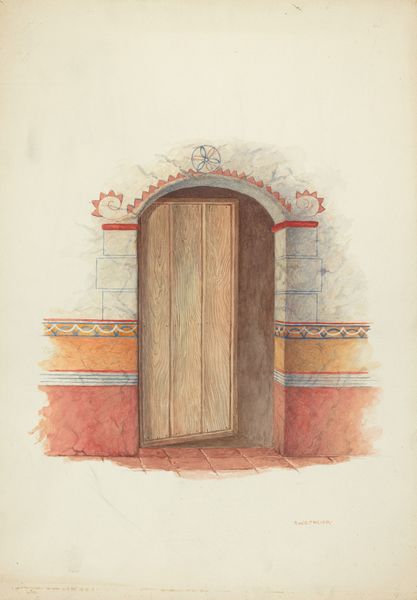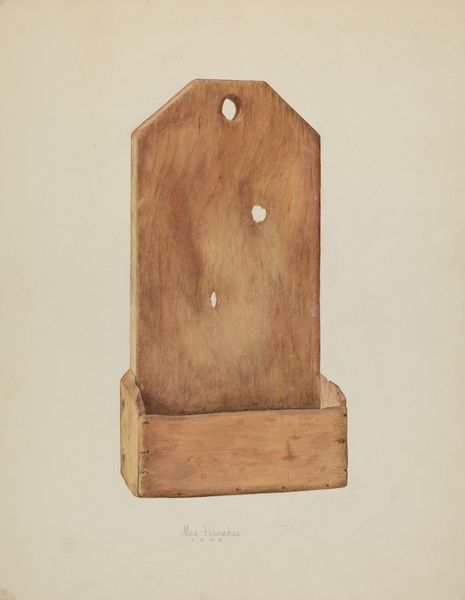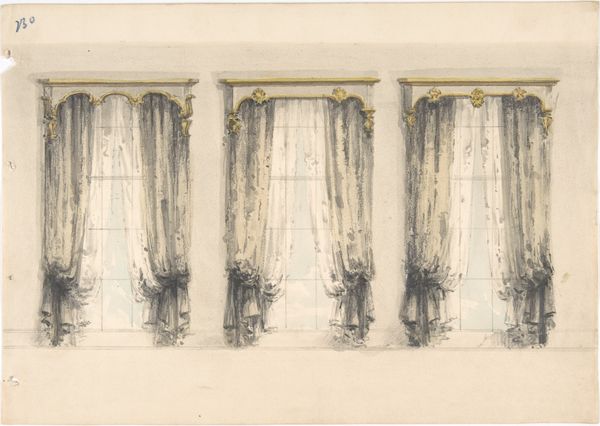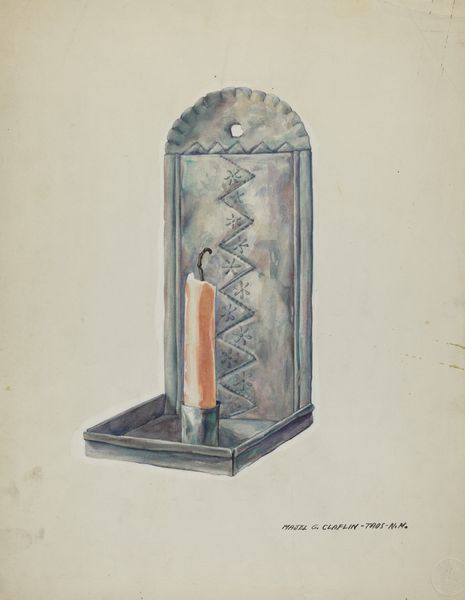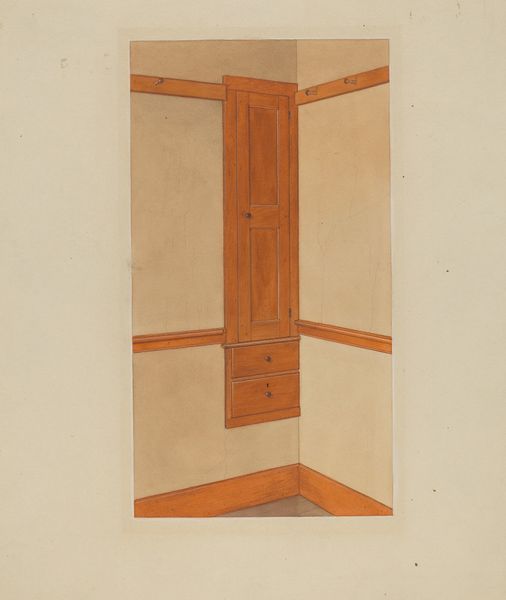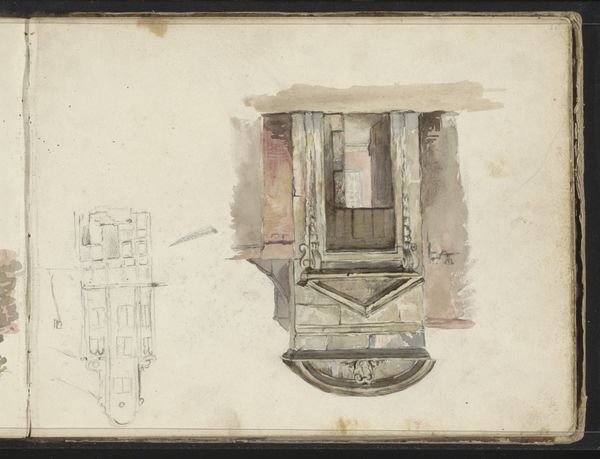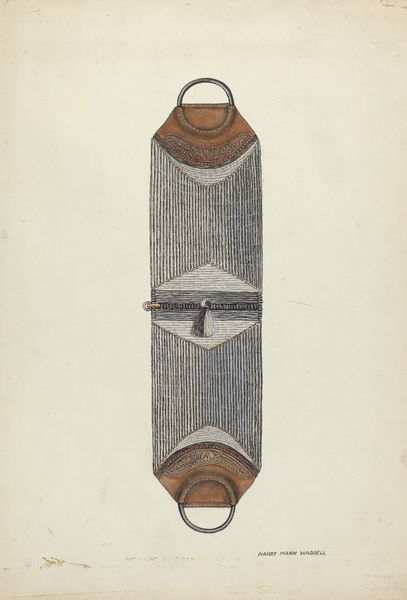
Restoration Drawing: Wall Decoration over Doorway, Facade of Mission House 1936
0:00
0:00
drawing, watercolor
#
drawing
#
landscape
#
watercolor
#
watercolor
Dimensions: overall: 28 x 35.5 cm (11 x 14 in.) Original IAD Object: Door approx: 6'3" x 3'3"
Copyright: National Gallery of Art: CC0 1.0
Curator: This watercolor drawing by Robert W.R. Taylor, dating to 1936, is entitled "Restoration Drawing: Wall Decoration over Doorway, Facade of Mission House." It presents a detailed study of architectural elements. Editor: My immediate impression is of something both aged and playful. The slightly faded colors give it a sense of history, but those whimsical, curving lines on the wooden panels almost seem to dance. Curator: It's interesting you see playfulness. Consider the social history of these mission houses; they often represented colonial power structures attempting to impose new cultural values onto existing communities. Perhaps those curving lines are an attempt to soften that power, to integrate indigenous aesthetics into the colonial architecture. Editor: That's a vital lens. Looking closer, I see how these lines interrupt what would otherwise be rigid, vertical panels. Are we sure that they integrate the structure? It looks more to me that they call out colonial disruption of cultural identities. This doorway isn't merely functional; it stands in for much bigger concepts. The choice to depict a *restoration* project speaks volumes too. Curator: The use of watercolor, a medium often associated with documentation and precise rendering, points towards its role within broader colonial projects, namely in attempting to understand what the restoration stands for and to analyze if it did or did not succeed. What is your thinking in comparing it with something related to documentation in colonialism projects? Editor: Right. Because Taylor chose watercolor he calls attention to a medium seen as 'objective' and yet clearly used it subjectively in selecting a limited palette to emphasize wear and time passage as though something important might have vanished or soon will. He's offering a record, yes, but of something in transition rather than some settled historical certainty. In what direction is this door even going to be moved? Curator: I think we both come to agree with a better grasp on what makes Taylor’s piece tick now: through acknowledging its ties with the legacy of those past architectural structures, perhaps a bit more clarity can shine down upon current discussions around it. Editor: A perspective certainly shifted! Perhaps more clarity, indeed. Thank you.
Comments
No comments
Be the first to comment and join the conversation on the ultimate creative platform.
